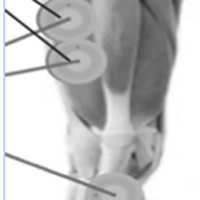Low-cost electromyography: validity against a commercial system depends on exercise type and intensity

Accepted: 2 April 2021
HTML: 4
All claims expressed in this article are solely those of the authors and do not necessarily represent those of their affiliated organizations, or those of the publisher, the editors and the reviewers. Any product that may be evaluated in this article or claim that may be made by its manufacturer is not guaranteed or endorsed by the publisher.
Authors
The aim of this study was to assess the validity of a custom-made low cost (LC) and a commercial surface EMG apparatus in controlled experimental conditions and different exercise types: maximal voluntary contractions (MVC) at 105, 90, 75, 60, 45 and 30° knee angle and explosive fix-end contractions of the knee extensors (75°) at an isometric dynamometer. sEMG of vastus lateralis was recorded from the same electrodes simultaneously, then analyzed in the same way; sEMG were finally expressed in percentage of those collected at 75°MVC. LC underestimated the sEMG signal at the more extended knee angles (30-60°), significant difference was observed only at 30°. In the explosive contractions no differences between devices were observed in average and peak sEMG, as well as in the time to peak and the activation time. Bland-Altman tests and correlation parameters indicate the LC device is not sensible enough to detect the time to peak and the peak values of the sEMG signal properly. Results suggest low-cost systems might be a valid alternative to commercial ones, but attention must be paid when analyzing rapid events.
How to Cite
PAGEPress has chosen to apply the Creative Commons Attribution NonCommercial 4.0 International License (CC BY-NC 4.0) to all manuscripts to be published.

 https://doi.org/10.4081/ejtm.2021.9735
https://doi.org/10.4081/ejtm.2021.9735



